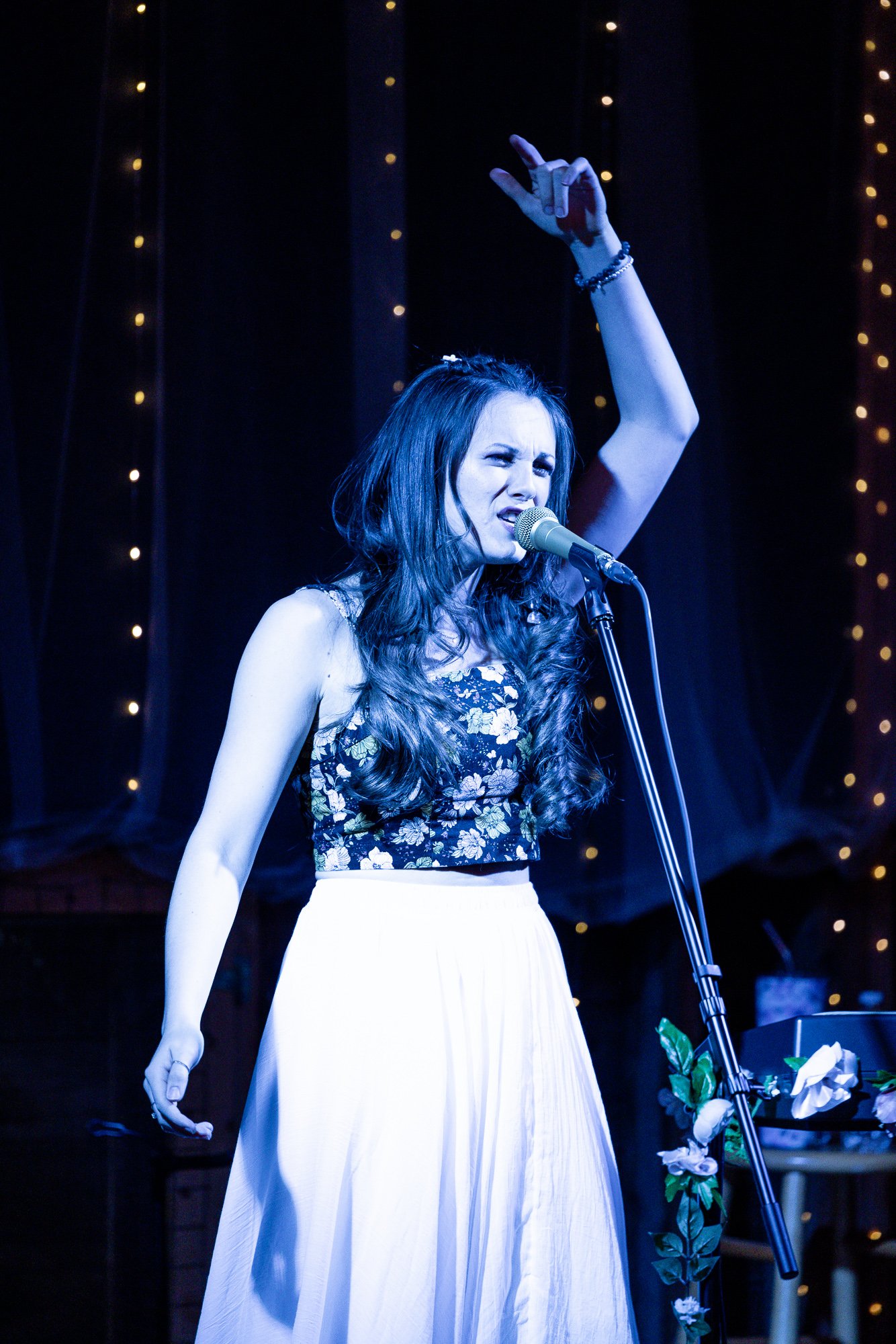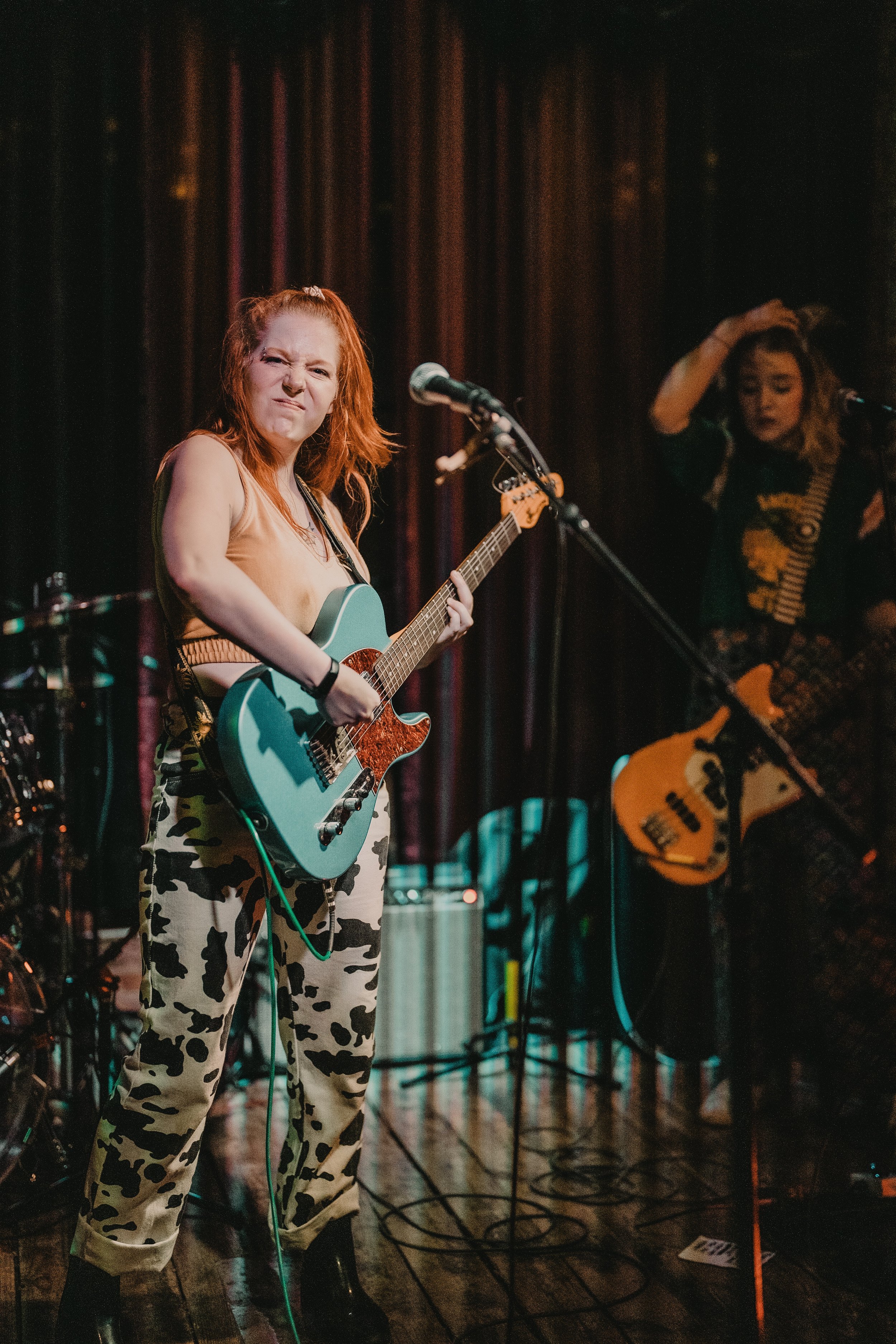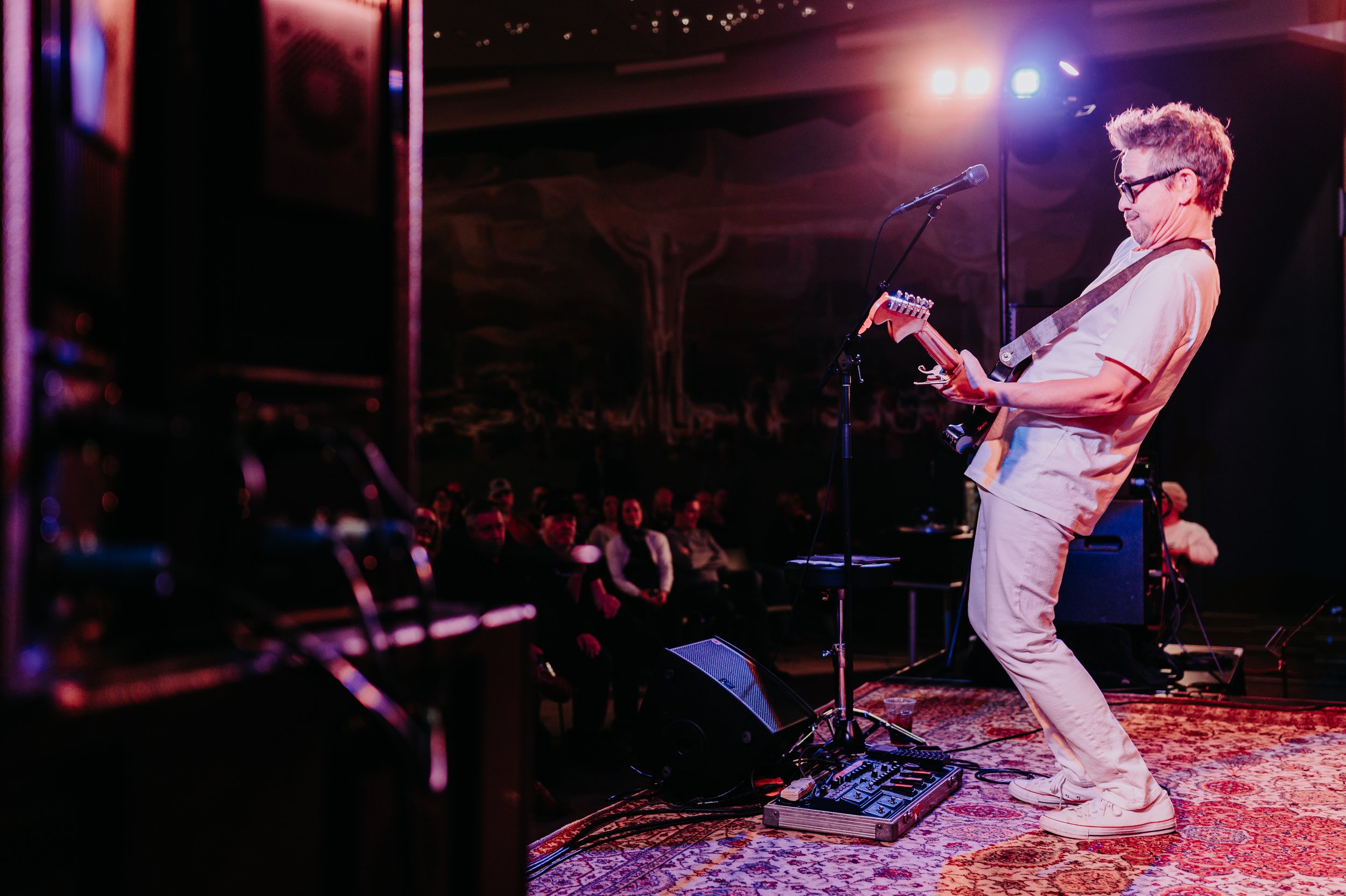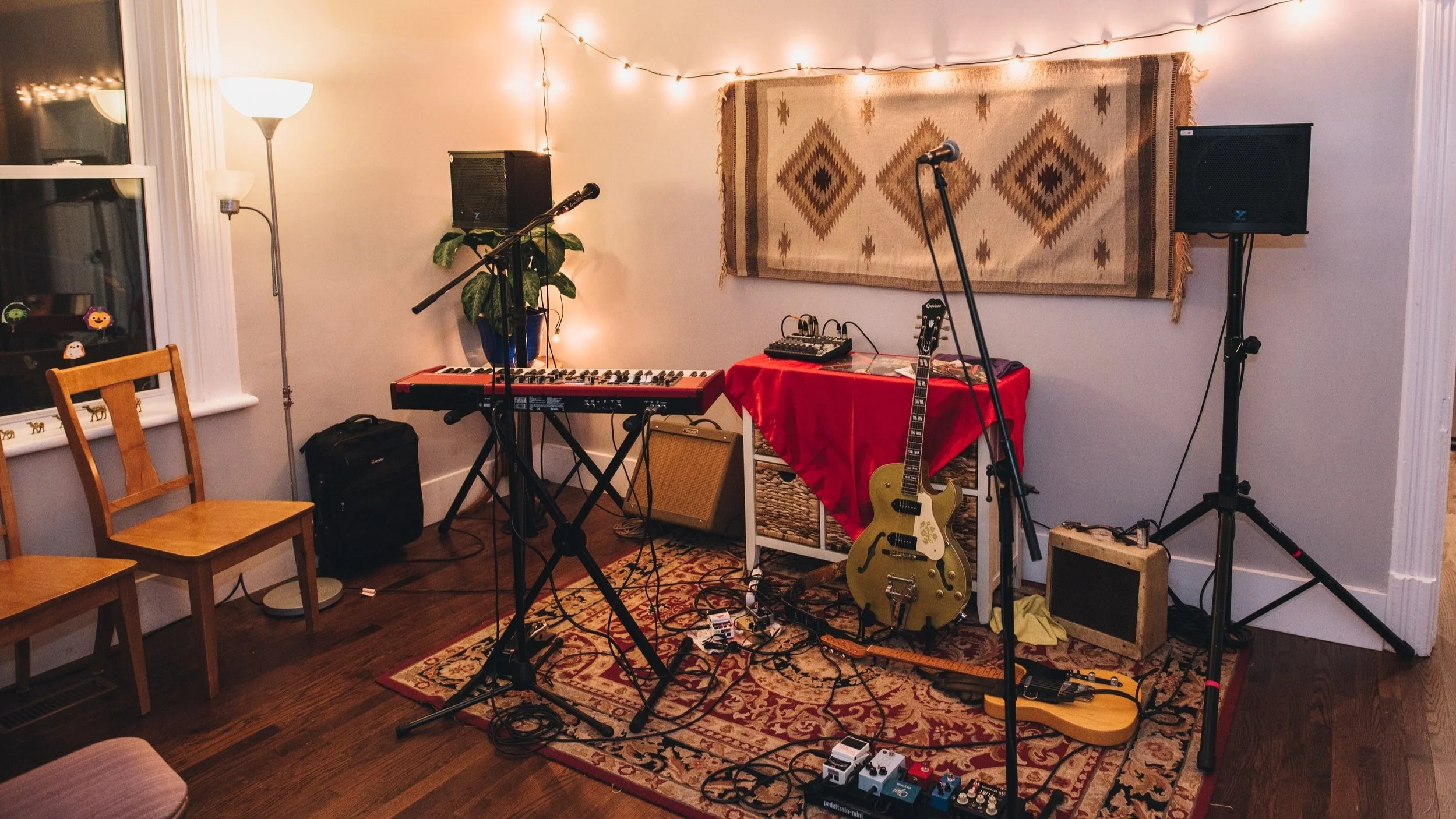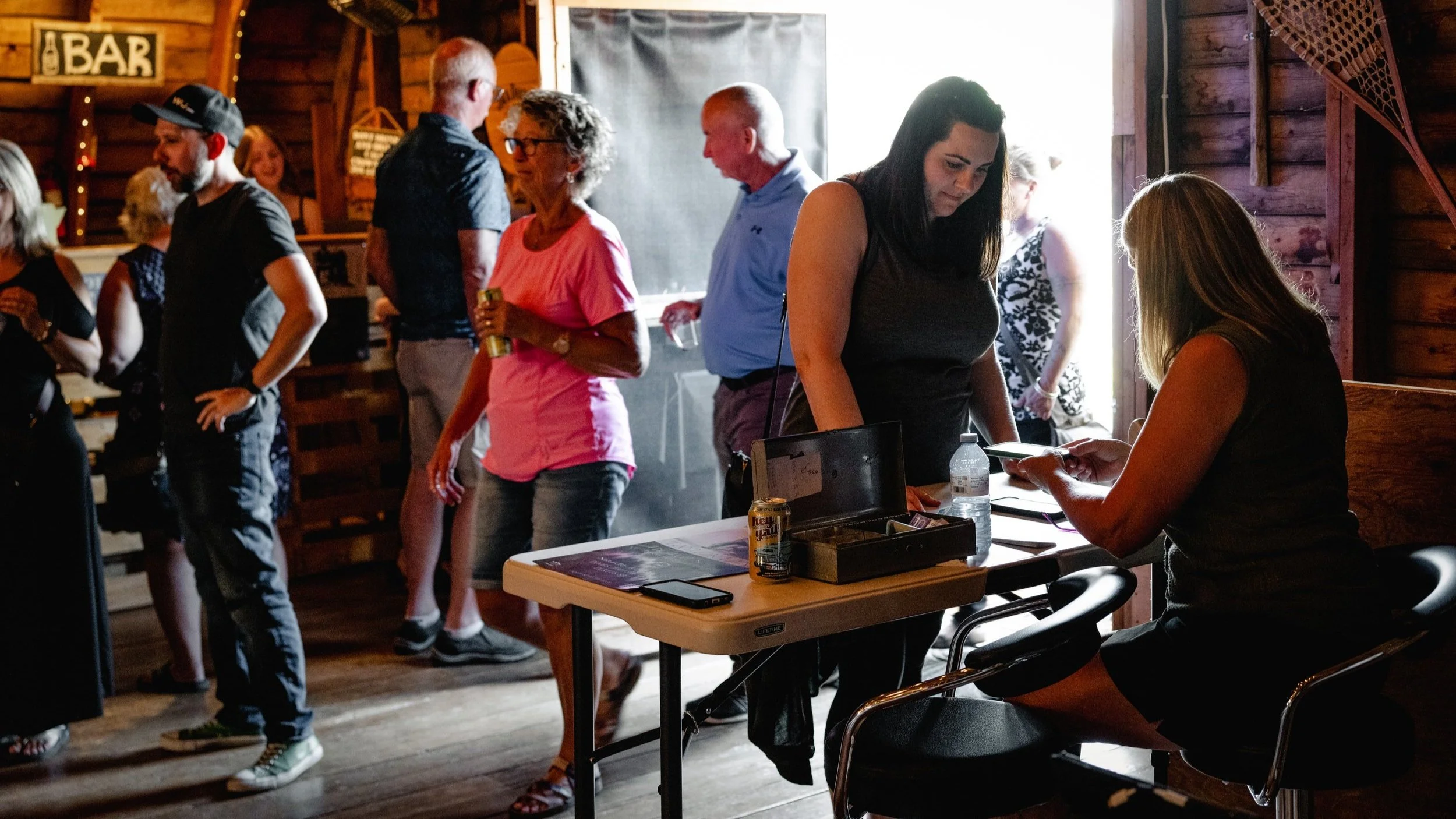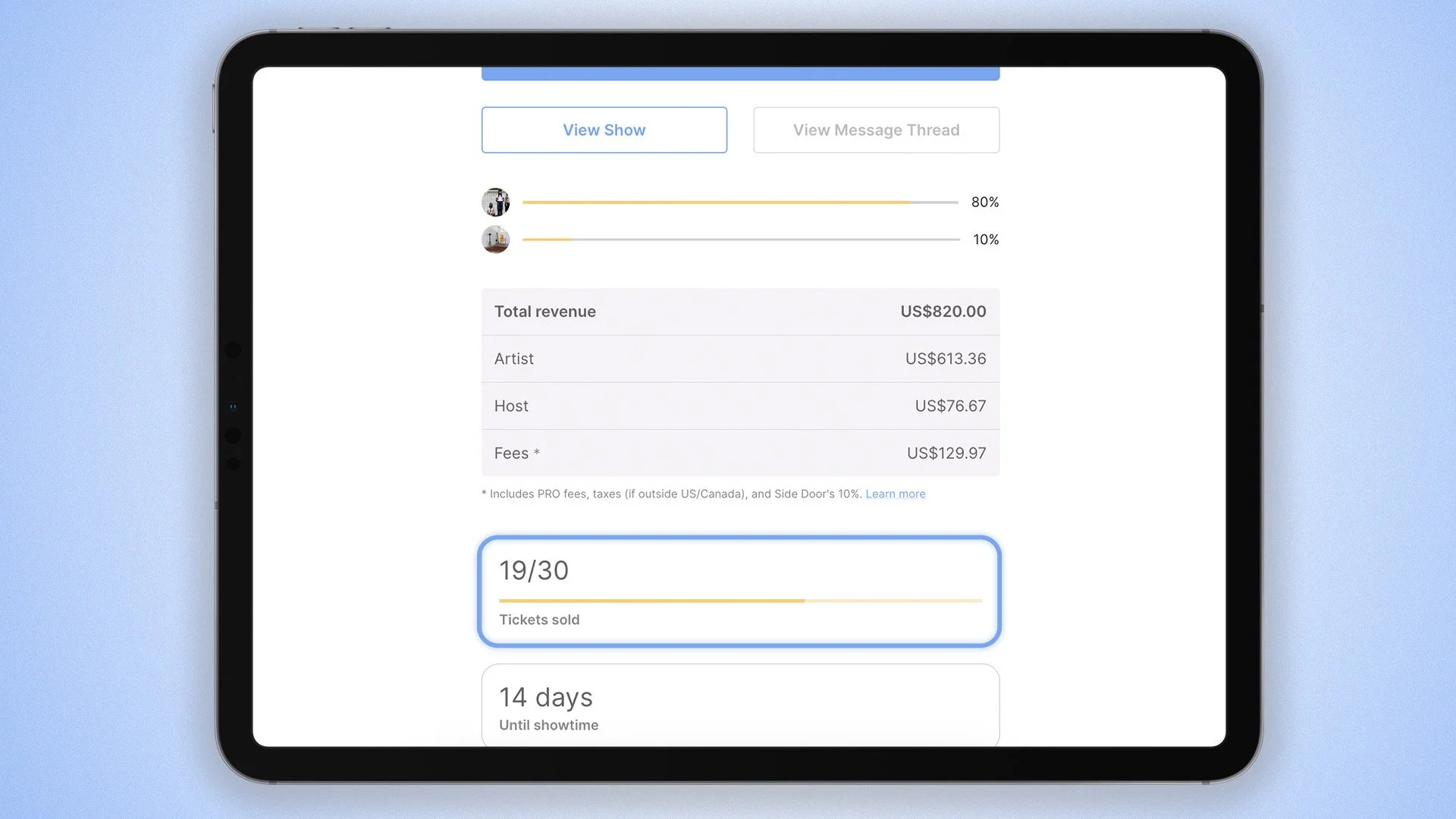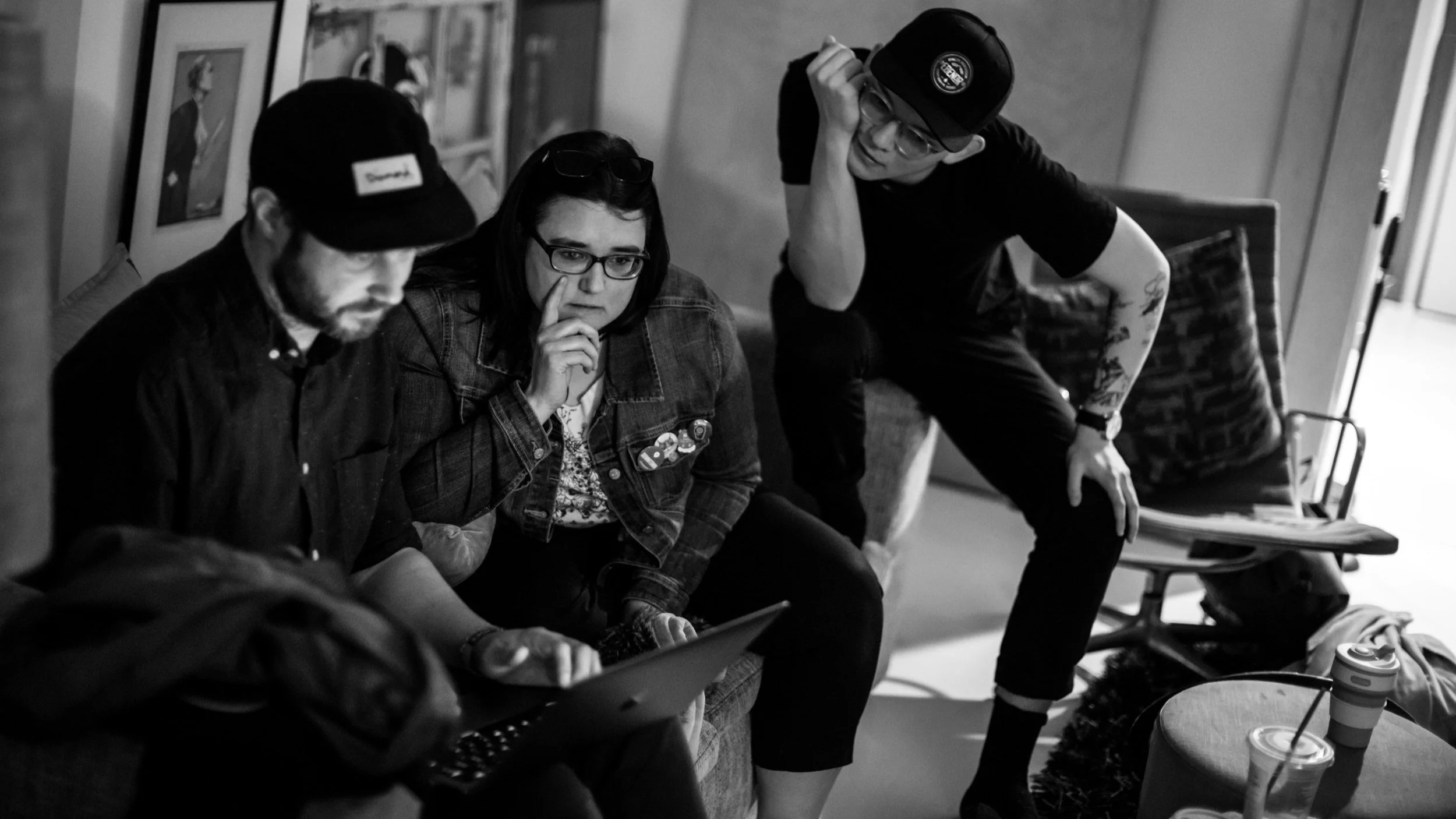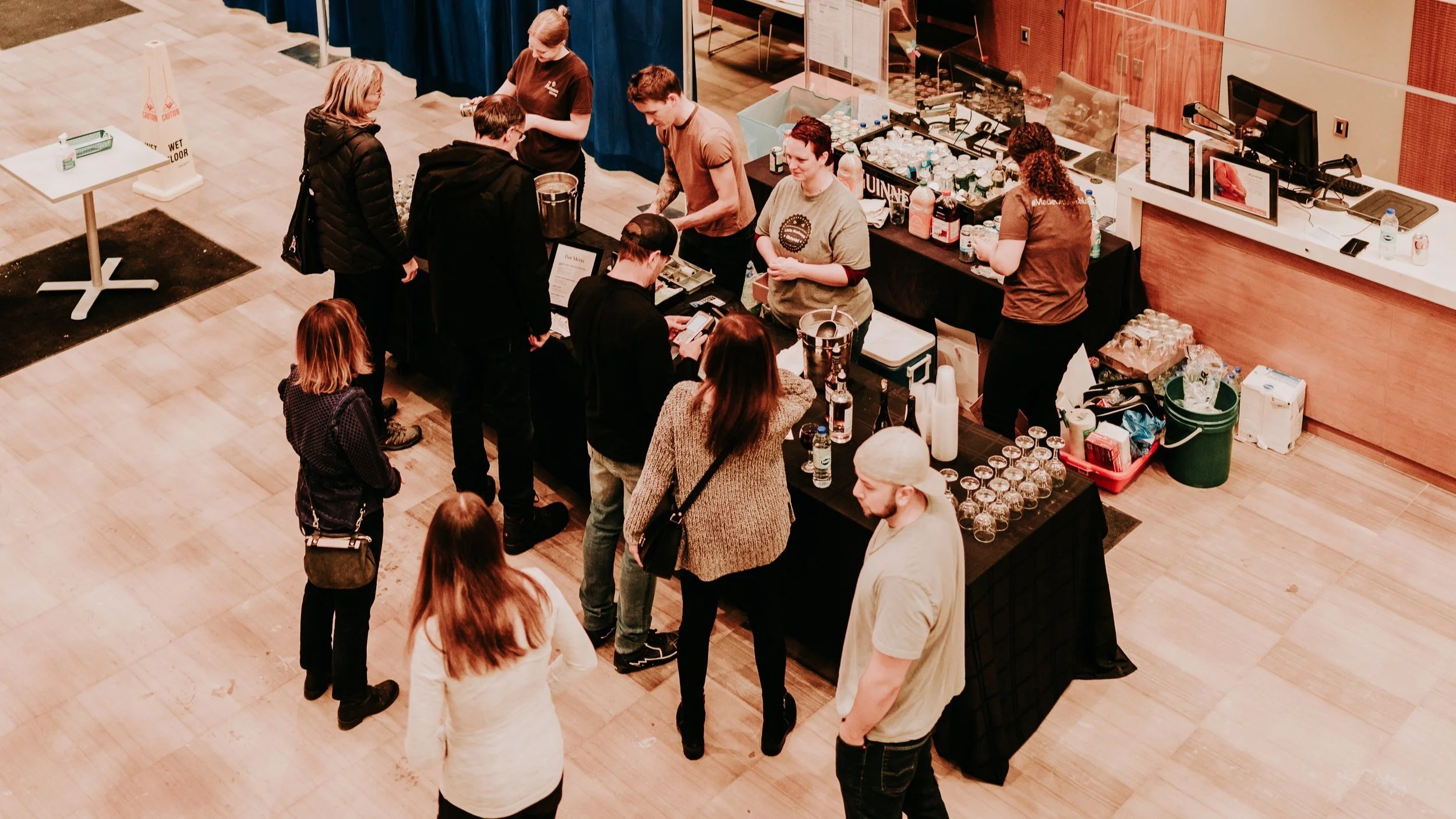11 Tips for Hosting a DIY Live Performance
Have you ever thought about bringing live music into your space? Whether you have a great living room, commercial space or public space to offer, opening up your space as a stage is a delightful experience, waiting to happen.
Tip 1: Find a Great Artist
Guess what? Artists are everywhere. GREAT ARTISTS are everywhere.
Start with your local listings to see who’s playing in your town at small venues. Those are the ones that would probably be happy to pick up another gig in your space. Ask your friends who they know and who THEY would like to see. You can even go see a few shows locally to consider who you like.
Alternatively, you can seek out artists who are looking for shows like these via a platform like Side Door. Remember to consider the size of the band and the loudness for who would be a great fit for your space.
Tip 2: Prepare Details About Your Space
What is your capacity?
Don’t worry, you don’t have to have a huge space. Fitting about 20 people in a room could be totally fine. As long as people don’t feel squished and can move in and out, great. Artists will want to know where you are and the kind of space:
Backyard?
Corner of a café?
Campground?
Will the show be open to the public?
Sometimes when folks are just starting to host shows, they make them private because it helps you keep the guestlist to folks you know. That said, incidents at intimate live performances are usually rare because it’s such a small group of people that keep each other in check.
If you want to open your space up beyond your friends and family, you can still choose to keep your address private to only those who buy a ticket to the show (sending it to them after purchase, as Side Door does). Decide what is best for you and those in your space.
Tip 3: Book Everything One Month In Advance (At Least)
Remember that it’s going to take some time to properly promote the show - sharing with your community, customers, and extended friends and family. They’ll need to be free to come, so usually, it’s best to choose a date that’s at least a month away. Many artists book shows three months or more in advance, so they can plan tours and sell tickets.
Find a date and time when you can have a couple of hours in the day to clean up your space and prepare for the show (more on that later).
Tip 4: Make a Plan for Ticketing and Compensation
Sometimes you can pay an artist a flat rate and invite your friends for free or agree on a ticket price that splits the cost among those who want to come.
How will the artist be compensated?
In any case, remember this is the artist’s work, and they should be paid for the performance.
How will you ticket the show?
You’ll need to decide if you’re only going to sell tickets in advance or have tickets available at the door.
If you or the artist want anyone to come for free (friends, photographer, kids), make sure you discuss this BEFORE putting tickets on sale. It will help you decide exactly how many tickets you have to sell.
Traditionally, homeowners don’t take any fees for hosting a show – the reward is a free show in your space that you can watch in your slippers! But if you need some cash to cover cleaning/snacks or extra staff if you’re a commercial/community space, you can discuss it with the artist. If you’re concerned that you will be considered as running a business out of your space, don’t take a fee.
In any case, deciding the ticket price and how to sell tickets is something you BOTH have to agree on.
Keep track of your ticket sales.
Using a ticket system helps to keep track of who is coming, and how many spots are left and alerts you when you’ve sold out.
If this sounds like a lot of work, don’t worry – you can use a platform like Side Door to manage your booking negotiation and ticketing efficiently and transparently.
Don’t forget about taxes and performance royalties.
Many times tax and performance royalties are ignored. But if you want to keep this on the up and up, it should be a discussion. Does the artist collect tax? If yes, decide if it will be included in the tax price or not and tell the ticket purchaser how the tax is broken out.
Performance royalties are required to be paid for any live performance. In Canada, this is through SOCAN. In the US, this is through ASCAP, BMI and SESAC.
Many private shows get away with not paying taxes or performance royalties but know that if you get caught, you will be penalized.
Using Side Door is a great and easy way to make sure that you’re paying out the right amount to the right people.
Tip 5: Get Your Performance Space Ready
The stage and seating
Decide where the ‘stage’ will be, whether you’ll have folks seated, standing, or both, and if you’ll have snacks/drinks.
The sound system
If you have your own PA (amplification, microphone, and microphone stands), that’s great – let the artist know what you have. If not, that’s fine too, and they can bring one if you both agree it’s necessary. Remember to check that you have outlets near the ‘stage’ to power the PA!
Tip 6: Tell the World! (or Just Your Friends…)
Promotion takes more than one go, so tell people every chance you get, and don’t be afraid to remind them multiple times. Don’t harass people, but assume people are busy and reminders are helpful.
You can get a photo and bio or show blurb from the artist and put that in an email or a newsletter to the folks you want to invite. If you’re making it a public show, you can even send it to the local listings in your paper.
It’s SUPER helpful to tell guests what to expect:
“Come to our gallery to experience some great music! We’ll have non-alcoholic drinks and snacks and just a reminder, we have a dog for anyone who is allergic! If you’re driving, you can park on the street. Please use the side door when you arrive!”
Make sure the artist has the info to tell THEIR friends and fans
If you’ve decided to make it a public show and you’re comfortable including a photo or a blurb about your space, that’s really helpful for the artist to use in their own promotion.
If you and the artist combine these things, the promo can look like this:
Artist photo & (maybe) venue photo
A blurb about the artist and/or what to expect at the show
Special instructions from the host about the space and how to get there – For example:
Date: Saturday, February 25
Venue: Gorgeous Art Gallery, 1234 Fun Street, Great City
Contact for more info: Trudy Treble trudytreble@funhost.com
Time of Set: 8:00 pm
Doors: 7:00 pm
Set length: at least 60 minutes
Tickets: $20 in advance via Side Door. Door sales only if any remain.
Food/Alcohol: We’re partnering with a local brewer for beer samples and a local caterer for snacks.
Cancellation policy: If sickness, weather conditions, or “Acts of God” result in a cancelled show, refunds will be given to those who’ve paid. If guests cannot attend the show, they may resell their ticket at face value or transfer it with permission.
Don’t forget to send a reminder three days before the show! A booking and ticketing platform like Side Door can make show promotion easier by sending updates and reminders to anyone who has purchased a ticket.
Tip 7: Plan Out the Details Ahead of Time
Questions to ask yourself:
When will you announce the show?
When will the artist come to your house to load-in their gear?
Who will bring the PA (if needed) and when will it be set up?
When will you open your doors for the show?
Who will mind the doors?
When will the show start?
How long will it last?
Will you do one set or two?
What’s the capacity?
Make a Master Plan
When you’ve worked out all of these things, it’s super helpful just to write out all of the information in one place to make sure you and the artist are both on the same page. It might look something like this:
Date: Saturday, February 25
Venue: Chill House, 1234 Fun Street, Great City
Contact: Trudy Treble, 902-555-5555, trudytreble@funhost.com
Time of Set: 8:00 pm
Doors: 7:00 pm
Set length: At least 60 minutes
Capacity: 40
Ticket price: $20 (taxes included) in advance. Door sales only if any remain.
Food/Alcohol: BYOB + snacks and non-alcoholic drinks are free
Load-in/soundcheck time: Anytime between 12 pm & 2 pm
Compensation: 90% of net ticket sales
Payments: Payment will be made automatically online via Side Door.
SOCAN: We pay into SOCAN so that you can collect for this show.
Sound: We can rent and help set up the PA – just let us know what’s needed.
Cancellation policy: If sickness, weather conditions, or “Acts of God” result in a cancelled show, refunds will be given to those who’ve paid. If guests cannot attend the show, they may resell their ticket at face value or transfer it with permission.
Tip 8: Prepare Your Space for Guests
Clean up, make room, walk through the space as if you’ve never been there before. Consider:
Where do I hang up my coat?
How do I get to the bathroom?
Is there easy access to beverages or food?
Is there adequate seating?
Is there anything that can be taken out to make more space for the flow of traffic?
Do you have a space for the artist to sell their merchandise?
Do you have a private space for the artist to store their belongings and prepare/chill out before the show, i.e., a green room?
If you are allowing alcohol and do not have a liquor license, please understand the risks involved. You can often easily get a liquor license for an event through your municipality, and doing so helps to consider the responsibilities of having alcohol at a show!
Don’t forget to go outside and ensure guests have a clear and easy way of knowing they’re in the right place and getting to the right door.
Have the ‘stage’ area ready for the artist before they are set to load in, set up a PA if that’s part of your job, and make sure you have extension cords ready, if necessary. Generally, being helpful to the artist is great. Ask them how you can assist and make room for them to set up and feel prepared and settled.
Have someone (yourself or someone polite and reliable) ready to greet guests when they come in, confirm they are in the right place by checking the guest list, sell tickets if you have some at the door (have change ready if you’re accepting cash and keep it in a secure place) and help them get comfortable.
Tip 9: Keep it Safe and Secure
If you have prized baseball cards or fancy crystal, better to put that stuff away – even if it is just friends coming over. If you have a step that new folks often trip on, put some bright tape down to make it more visible. If you don’t want people going upstairs, use some signage to indicate that in a polite way. This is YOUR space.
Make sure you give friendly guides for people to know how to be in that space without making anyone uncomfortable. This includes making sure guests aren’t confused, scared or annoyed. Clear signage and verbal instructions, delivered in a polite fashion goes a long way.
Tip 10: Be a Great Host – but Remember to Enjoy the Show!
Before the show, take a breath.
You’re probably excited and you’ve done great work to get here. But know – this is what it’s all for! When it’s close to show time, check in with the artist and see if they’re ready. Ask them if they need water or anything else. Decide if, when and how you’ll go up to introduce them.
Find a spot where you can see the show, but also be accessible to the artist and guests in case they need your help. When it’s time to begin, welcome the guests, remind them of important things like where the bathroom is and remind them of the expectations for the show (no cell phones, how long the set is, etc.) Be brief and warm. This is going to be fun!
Tip 11: End the Show on the Right Note
When the show is complete, thank the artist and audience. Help them understand if it’s okay to hang out for a bit, whether the artist is selling albums or other merchandise or if the event is over.
Check in with the artist to see if they need help and assist the audience in getting what they need and exiting your place safely. If you have to pay the artist cash you have collected or otherwise, make sure you manage this before they go, in private.
If you’ve used the Side Door platform to book the show, both hosts and artists are paid automatically after each show. Side Door will keep track of ticket revenue and show stats, tracking market insights and trends for the artist and hosts to use to their advantage.
Finally, don’t be surprised if folks express the desire to come again. You can start a mailing list with names and emails for the next time!


